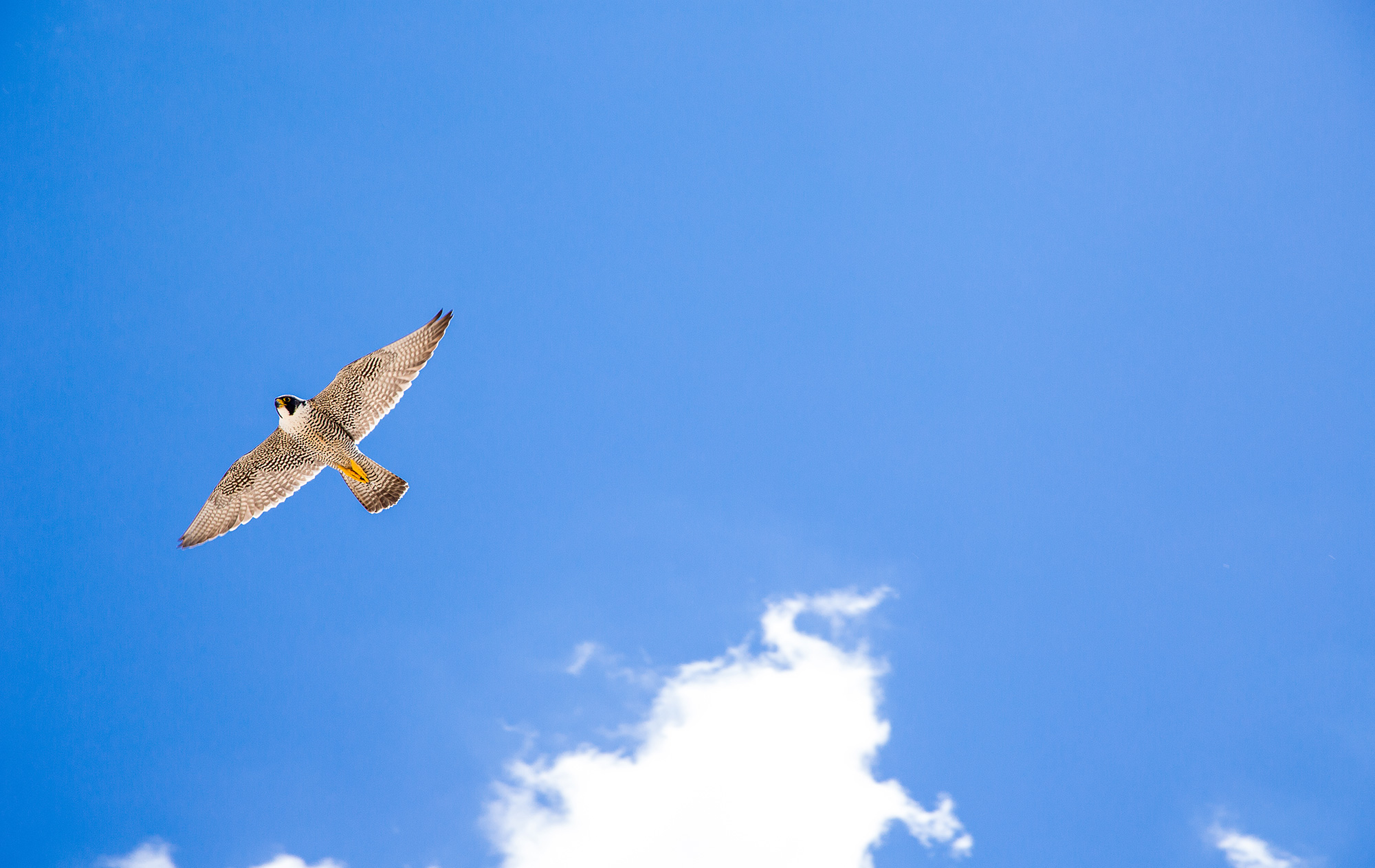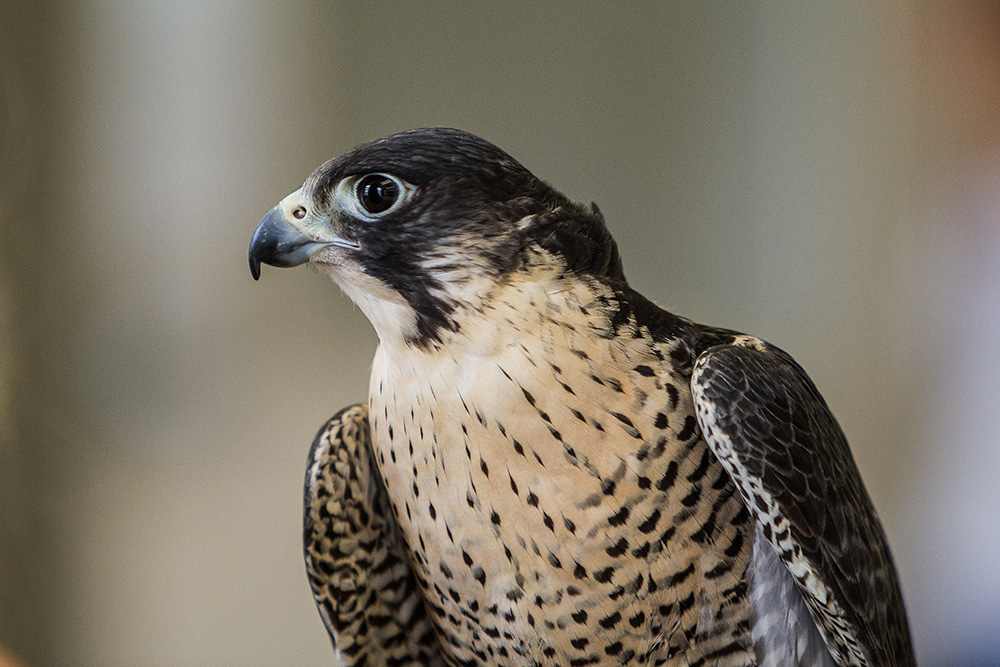
Falcons

MGE's peregrine falcon program began in 1999 when an employee and his son built a nesting box for the son's school project. MGE installed the nesting box atop Blount Generating Station just east of downtown Madison in 1999, where it remained unoccupied for 10 years. Falcons finally began using the box in 2009.
Since 2009, 58 falcon chicks have hatched at Blount and there are 84 known "grandchildren," adding more than 140 endangered peregrine falcons to the world since our program began.
MGE Falcon Cam
Check out our livestream cam for a bird's-eye view of the nesting box atop MGE's Blount Generating Station in downtown Madison.
Falcon facts
High-speed skills
Peregrine falcons are one of the world's fastest birds, being able to reach 200 miles per hour while diving from great heights to strike prey. See the amazing speed and skill of adult falcons in the air in the video from National Geographic!
Endangered in Wisconsin
Peregrine falcons are on Wisconsin's endangered species list. Historically, the use of DDT pesticides resulted in the rapid decline in the falcon population. Falcons were nearly extinct in the 1960s.
Global species
Peregrine falcons can be found on every continent except Antarctica!
Size matters
Female falcons can be up to 20% larger than male falcons.
Skilled hunters
Peregrine falcons feed on a variety of birds, including pigeons, ducks and songbirds, as well as bats. They can catch their prey in mid-air.
What's in a name?
Peregrine falcons get their name from the Latin word peregrinus, meaning "to wander."
Falconwatch
Learn more about local falcons with Wisconsin Falconwatch, published annually by falcon expert Greg Septon.

